PREFACE
SUMMARY OF CHANGES
TABLE OF CONTENTS
EXECUTIVE SUMMARY
CHAPTER I OVERVIEW OF ELECTRONIC WARFARE
1. Introduction
2. Military Operations and the Electromagnetic Environment
3. Role of Electronic Warfare Across the Range of Military Operations
4. Principal Electronic Warfare Activities
5. Electronic Warfare Capabilities and Potential Effects
6. Electronic Warfare’s Role in Irregular Warfare
7. Electronic Warfare’s Role in Information Operations
8. Electronic Warfare’s Role in Space Operations
9. Electronic Warfare’s Role in Cyberspace Operations
10. Electronic Warfare’s Relationship to Nuclear Operations
11. Electronic Warfare’s Relationship to Navigation Warfare
12. Directed Energy
13. Intelligence and Electronic Warfare Support
CHAPTER II ORGANIZING FOR JOINT ELECTRONIC WARFARE
1. Introduction
2. Responsibilities
3. Joint Electronic Warfare Organization
4. Joint Frequency Management Organization
5. Organization of Intelligence Support to Electronic Warfare
6. Service Organization for Electronic Warfare
CHAPTER III PLANNING JOINT ELECTRONIC WARFARE
1. Introduction
2. Electronic Warfare Planning Considerations
3. Joint Electronic Warfare Planning Process
4. Electronic Warfare Planning Guidance
5. Electronic Warfare Planning Aids
CHAPTER IV COORDINATING JOINT ELECTRONIC WARFARE
1. Introduction
2. Joint Electronic Warfare Coordination and Control
3. Service Component Coordination Procedures
4. Electronic Warfare and Intelligence, Surveillance, and Reconnaissance Coordination
5. Electronic Warfare and Interagency Coordination
CHAPTER V MULTINATIONAL ASPECTS OF ELECTRONIC WARFARE
1. Introduction
2. Multinational Force Electronic Warfare Organization and Command and Control
3. Multinational Electronic Warfare Coordination Cell with Allies and Other Friendly Forces
4. Electronic Warfare Mutual Support
5. Releasability of Electronic Warfare Information to Multinational Forces
APPENDICES
APPENDIX A ELECTRONIC WARFARE GUIDANCE
APPENDIX B ORGANIZATIONS SUPPORTING JOINT ELECTRONIC WARFARE
ANNEX A TO APPENDIX B ELECTROMAGNETIC-SPACE ANALYSIS CENTER
ANNEX B TO APPENDIX B GLOBAL POSITIONING SYSTEM OPERATIONS CENTER
ANNEX C TO APPENDIX B US STRATEGIC COMMAND JOINT ELECTRONIC WARFARE CENTER
ANNEX D TO APPENDIX B JOINT NAVIGATION WARFARE CENTER
ANNEX E TO APPENDIX B JOINT SPECTRUM CENTER
ANNEX F TO APPENDIX B INFORMATION OPERATIONS RANGE
APPENDIX C ELECTRONIC WARFARE JOINT MUNITIONS EFFECTIVENESS MANUAL PLANNING
APPENDIX D ELECTRONIC WARFARE FREQUENCY DECONFLICTION PROCEDURES
APPENDIX E ELECTRONIC WARFARE REPROGRAMMING
APPENDIX F ELECTRONIC WARFARE MODELING
APPENDIX G SPECTRUM XXI
APPENDIX H REFERENCES
APPENDIX J ADMINISTRATIVE INSTRUCTIONS
GLOSSARY
PART I—ABBREVIATIONS AND ACRONYMS
PART II—TERMS AND DEFINITIONS
FIGURES
Figure I-1. The Electromagnetic Spectrum
Figure I-2. Electromagnetic Environment
Figure I-3. Overview of Electronic Warfare
Figure II-1. Organization of Intelligence Support to Electronic Warfare Operations
Figure III-1. Joint Frequency Management Office Spectrum Management Process
Figure III-2. Electronic Warfare Cell Actions and Outcomes as Part of Joint Planning
Figure C-1. Communications and Radar Electronic Attack Planning Effectiveness Reference Radar Jammer Effectiveness Quick Look
Figure C-2. Ad Hoc Network Analysis Tool
Figure D-1. Sample Joint Restricted Frequency List Format
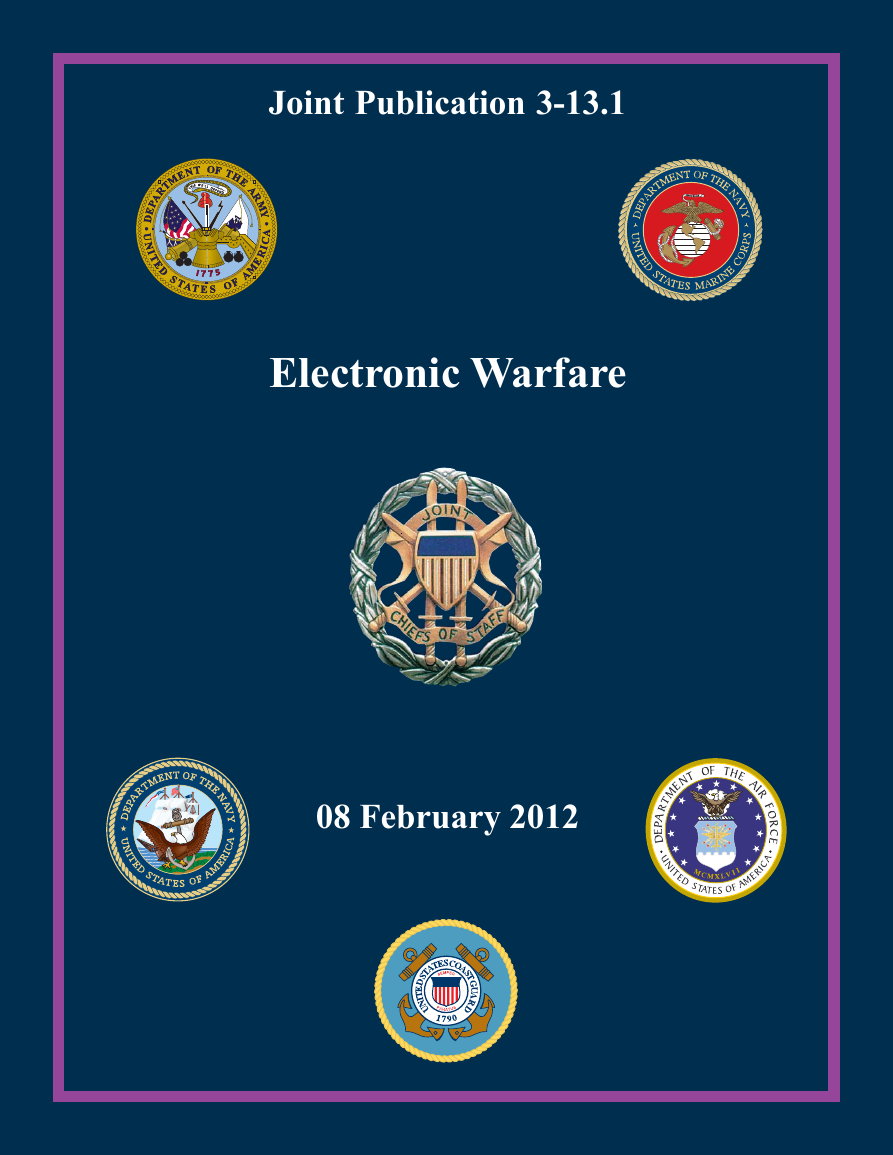

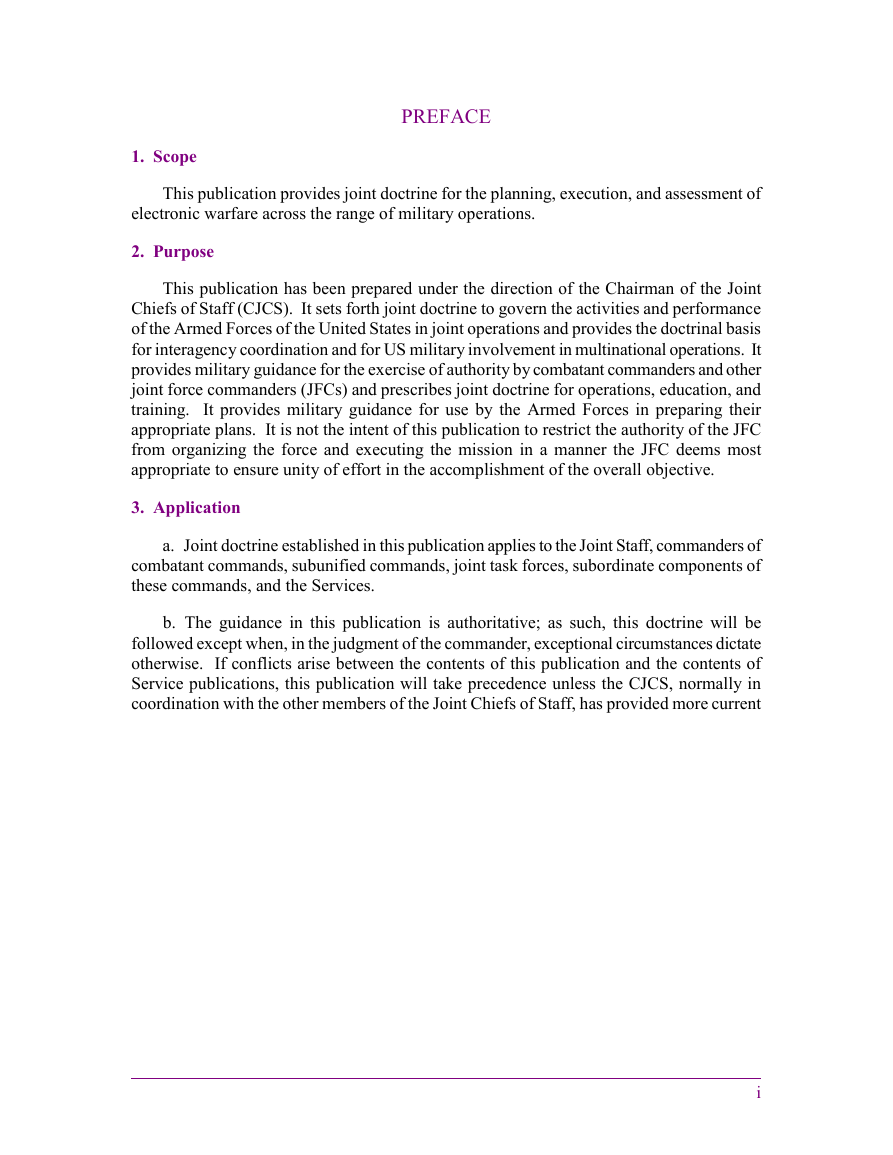
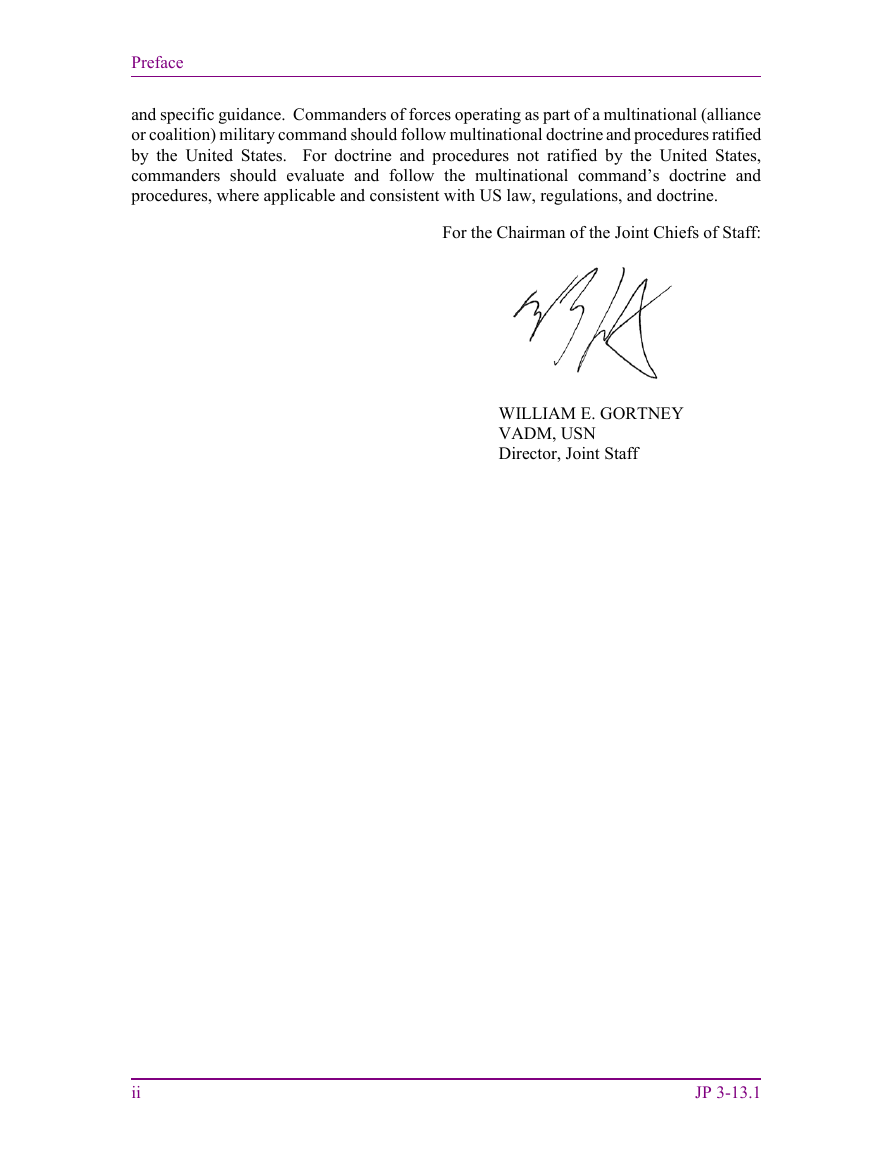
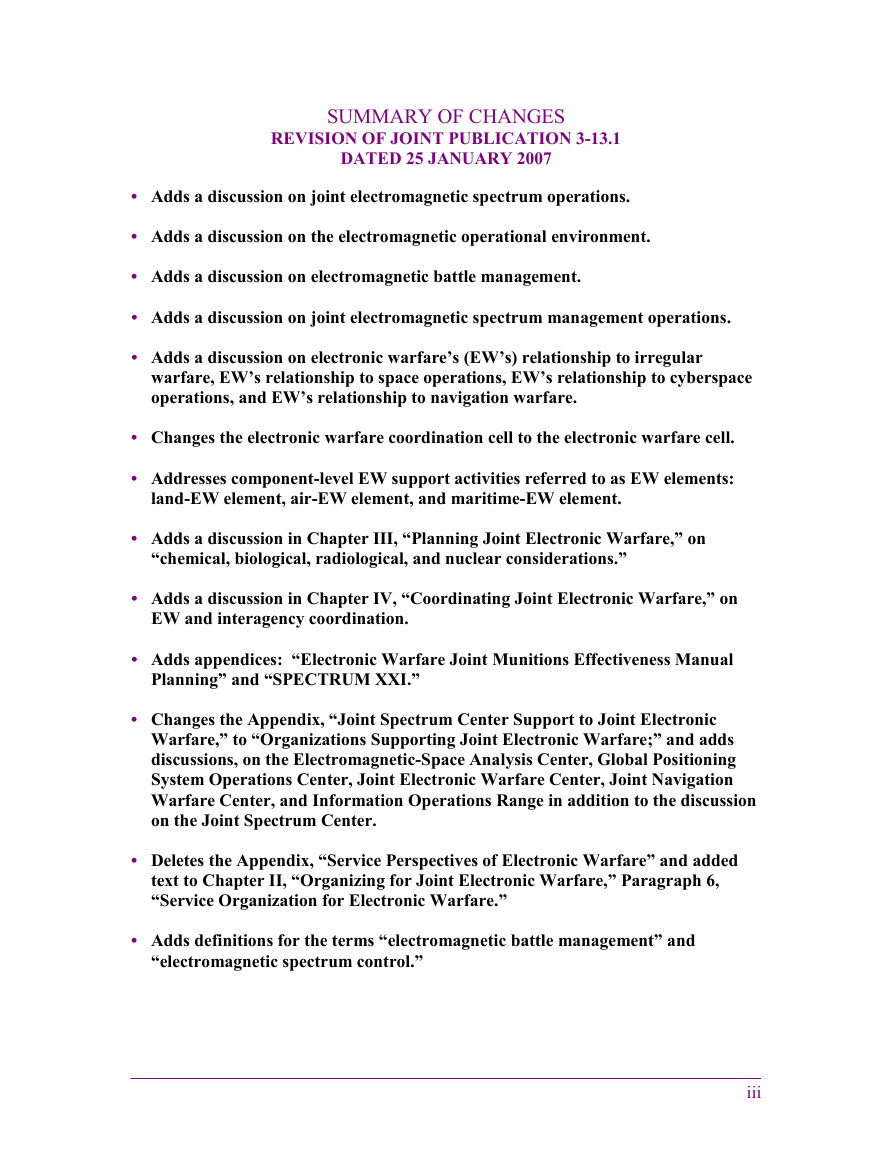
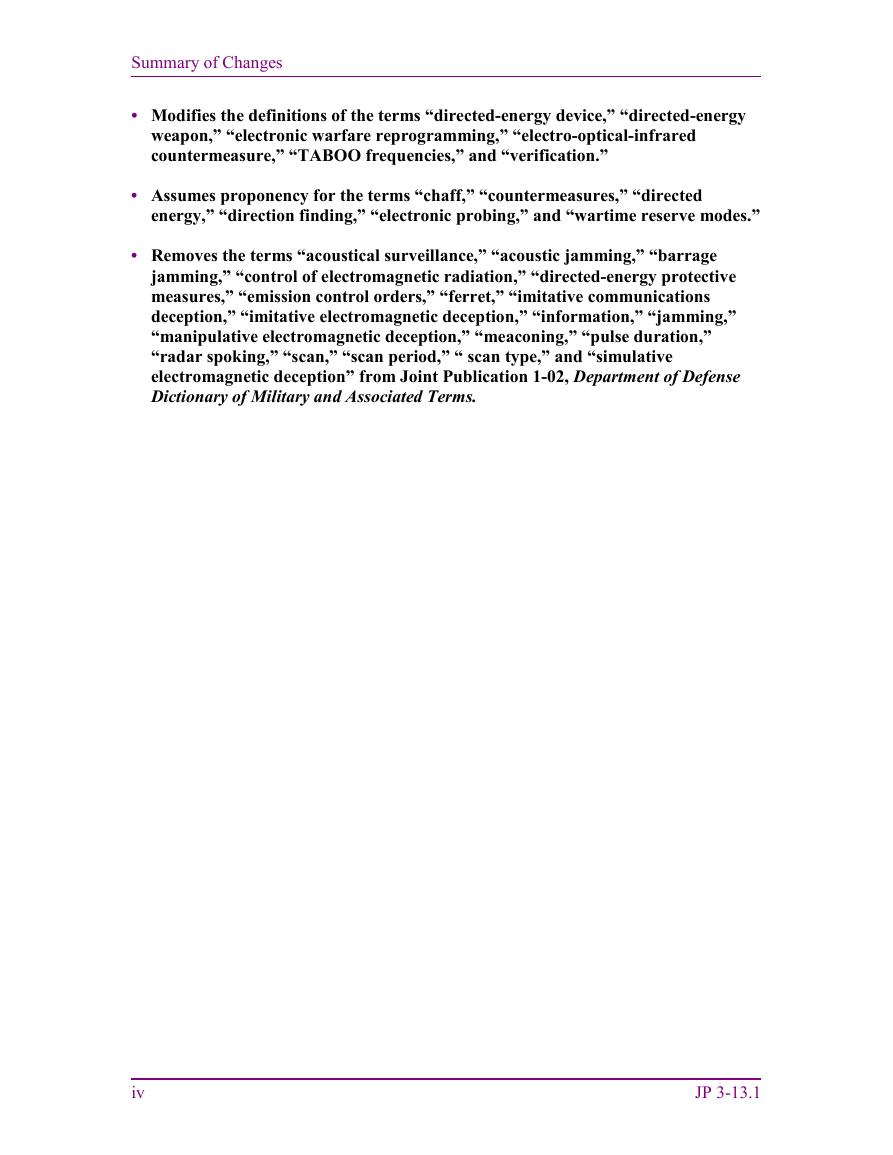
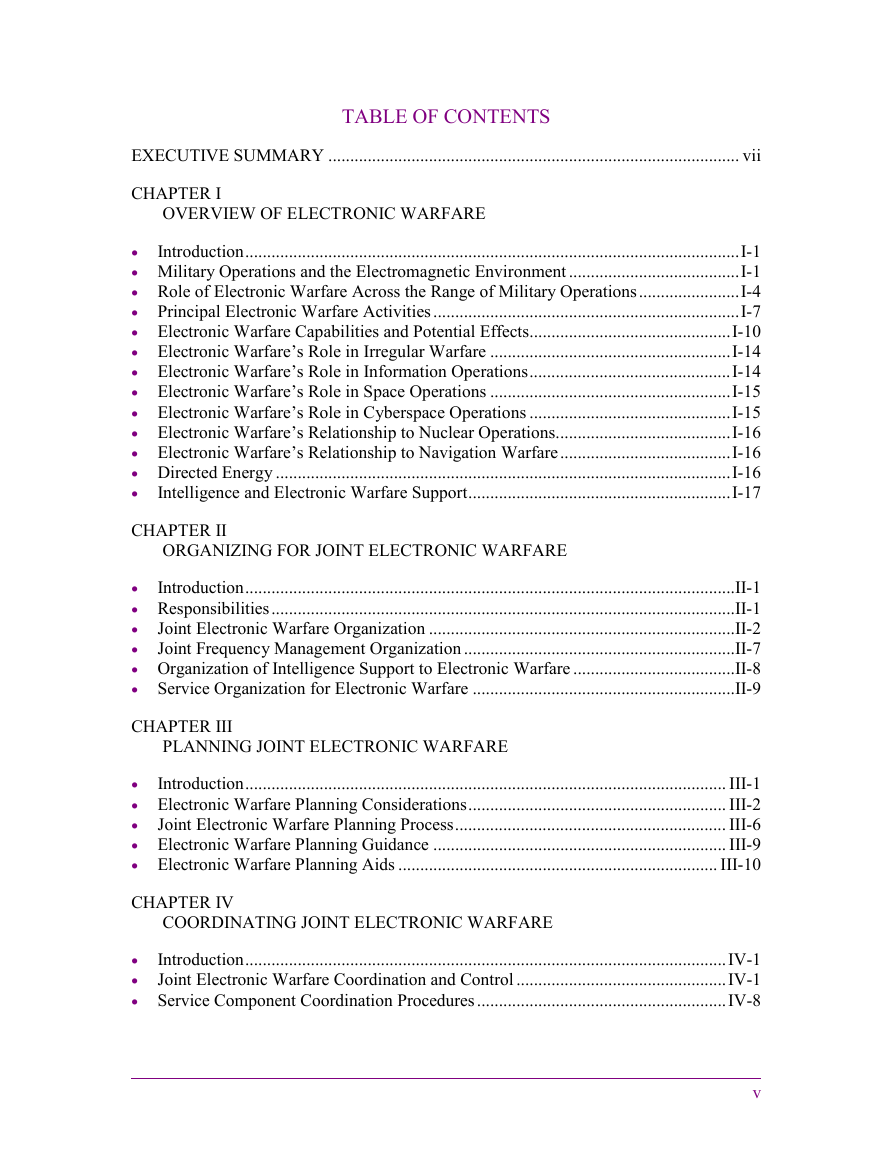









 2023年江西萍乡中考道德与法治真题及答案.doc
2023年江西萍乡中考道德与法治真题及答案.doc 2012年重庆南川中考生物真题及答案.doc
2012年重庆南川中考生物真题及答案.doc 2013年江西师范大学地理学综合及文艺理论基础考研真题.doc
2013年江西师范大学地理学综合及文艺理论基础考研真题.doc 2020年四川甘孜小升初语文真题及答案I卷.doc
2020年四川甘孜小升初语文真题及答案I卷.doc 2020年注册岩土工程师专业基础考试真题及答案.doc
2020年注册岩土工程师专业基础考试真题及答案.doc 2023-2024学年福建省厦门市九年级上学期数学月考试题及答案.doc
2023-2024学年福建省厦门市九年级上学期数学月考试题及答案.doc 2021-2022学年辽宁省沈阳市大东区九年级上学期语文期末试题及答案.doc
2021-2022学年辽宁省沈阳市大东区九年级上学期语文期末试题及答案.doc 2022-2023学年北京东城区初三第一学期物理期末试卷及答案.doc
2022-2023学年北京东城区初三第一学期物理期末试卷及答案.doc 2018上半年江西教师资格初中地理学科知识与教学能力真题及答案.doc
2018上半年江西教师资格初中地理学科知识与教学能力真题及答案.doc 2012年河北国家公务员申论考试真题及答案-省级.doc
2012年河北国家公务员申论考试真题及答案-省级.doc 2020-2021学年江苏省扬州市江都区邵樊片九年级上学期数学第一次质量检测试题及答案.doc
2020-2021学年江苏省扬州市江都区邵樊片九年级上学期数学第一次质量检测试题及答案.doc 2022下半年黑龙江教师资格证中学综合素质真题及答案.doc
2022下半年黑龙江教师资格证中学综合素质真题及答案.doc